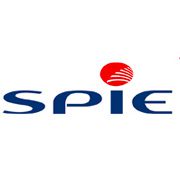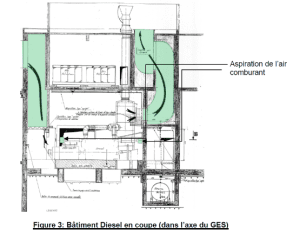- Our PlaygroundOur PlaygroundDiscover Ax System's innovative solutions for maintaining the performance of your industry. Designed to meet the unique needs of each industry, our systems provide effective and efficient cleaning for a range of applications. Whether you're in power generation, oil and gas or any other sector, our tailor-made solutions ensure optimum performance and longevity of your equipment.
- Our SolutionsOur SolutionsDiscover AX System's range of products, designed to meet a variety of industrial cleaning needs. Our products fall into our main categories: Air Cooler and Air Condenser Cleaning, Industrial Misting, Custom Industrial Cleaning, and Industrial Machine Cleaning Services.
We offer specific solutions to meet your unique needs. For instance, we provide Filter Press Cleaners, Electromagnetic Filter Cleaners, and Rotary Filter Cleaners. - What we cleanWhat we cleanDiscover our expertise in high-pressure cleaning for a variety of industrial equipment! Our know-how enables us to work on air condensers, heat exchangers and many other installations. Thanks to our specialized approach, we guarantee optimum performance and enhanced durability for these vital pieces of equipment.
- Our Achievements
- About Us
- Contact
Fogging on Diesel Generator at Bugey Nuclear Power Station


EDF
EPC contractor : Spie Nuclear
The project forms part of the periodic review of operating temperatures imposed by the following the heatwave of 2003. It aims to increase the available power of the Emergency Generating Set (GES LHG/LHH) of the BUGEY power plant, in the following scenario: Emergency Heatwave + External Voltage Failure (MDTE) in operation for 6 hours + Aggravating "Loss of a GHG".
The CP0 ENSNEA050052 ind.B hot weather reference for Bugey considers a maximum outside temperature of 44.4°C during a heatwave for a maximum duration of 6 hours.
GHG refers to the Diesel Engine (which supplies mechanical power) and Alternator (which converts the mechanical power of the diesel into electrical power). mechanical power into electrical power).

The service provided by AX System in partnership with Spie Nucléaire consists of supplying a mist cooling system to lower the temperature of the various air streams entering the plant. mist cooling system to lower the temperature of the various air streams entering the LHG/LHH Emergency in the LHG/LHH emergency power units at the BUGEY site, namely :
- ventilation air from the diesel engine air cooler room
- the combustion air from the diesel engines (via the ventilation air in the diesel room).
Each unit at the Bugey site has 2 GHGs (LHG for lane A and LHH for lane B). The Bugey site site therefore has 8 GHGs to be equipped with a misting system. The misting system lowers the temperature of the ventilation air in the dryer room by around 8.5°C. the temperature of the ventilation air in the air cooler room and that of the combustion air in the emergency power units.
The diesel supply includes, but is not limited to :
- a network of pipes and valves
- a misting “station” comprising the main hydraulic equipment (motor-driven pump unit, demineralised water filter, solenoid valves, pressure reducer, etc.) demineralised water filter, solenoid valves, pressure reducer, etc),
- spray booms,
- a legionella treatment system,
- an autonomous control and command system (cabinet) to which sensors and actuators are connected.
EDF qualification required :
- Boilermaking, pipework >; Work >; Welding >; ESP welding
- Boilermaking, pipework >; Intervention >; Maintenance of complete support systems >; Supporting
- Valves >; Non-return valves >; Manufacturing Group 3
- Valves >; Pressure reducing valves >; Manufacturing Group 3
- Valves >; Isolation valves >; Manufacturing Group 3
Quality assurance:
The service is carried out under cover of the Licensee’s Quality Assurance (Case 1 of UTO note 85/114).
This service falls within the scope of the modifications for the VD4 900 periodic review.
The material provisions valued for the misting function are important elements for safety (EIPS) in the context of the periodic review. safety (EIPS) within the meaning of the Order of 7 February 2012 laying down the general rules governing nuclear installations. These provisions are subject to :
– design and manufacture under quality assurance,
– qualification under the INB decree,
– suitability for periodic testing
– monitoring throughout the lifetime of the installation.
The misting system is classified as IPS-NC, and the case will be carried out in accordance with the EN/NF standards in force. standards.
The Machine Directive 2006/42/EC is applicable.
The requirements of the environmental decision are applicable (Decision no. 2013-DC-0360 of the French Nuclear Safety Authority (ASN) of (ASN) of 16 July 2013 relating to the control of nuisances and impact on health and the
the environment of basic nuclear installations for the storage of hazardous products).
The new equipment must not have any adverse effects on the EIPS (compliance with the earthquake event).
we
improve
efficiency


